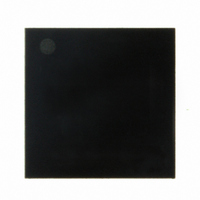TRC103 RFM, TRC103 Datasheet - Page 44

TRC103
Manufacturer Part Number
TRC103
Description
RFIC TRANSCEIVER MULTI-CHANNEL F
Manufacturer
RFM
Series
TRCr
Datasheet
1.TRC103.pdf
(64 pages)
Specifications of TRC103
Frequency
863MHz ~ 960MHz
Data Rate - Maximum
100kbps
Modulation Or Protocol
FSK, OOK
Applications
General Purpose
Power - Output
11dBm
Sensitivity
-112dBm
Voltage - Supply
2.1 V ~ 3.6 V
Current - Receiving
4mA
Current - Transmitting
30mA
Data Interface
PCB, Surface Mount
Antenna Connector
PCB, Surface Mount
Operating Temperature
-40°C ~ 85°C
Package / Case
32-QFN
Lead Free Status / RoHS Status
Lead free / RoHS Compliant
Memory Size
-
Other names
583-1095-2
phase noise reciprocal mixing. The two tank circuit inductors have the same value which depends on the band of
operation and the PCB layout. Typical values are given in Table 54 (location of L5 & L6 shown in Figure 2):
The tank circuit inductors should be mounted close to their IC pads with the long axis of the coil at right angles to
the edge of the IC where the pads are located. The decoupling capacitors should be positioned on each side of
the tank circuit inductors. Other RF chokes and coils should be spaced somewhat away from the tank inductors
and positioned at right angles to minimize coupling.
VCO frequency centering is checked by looking at the voltage between pads 6 and 7. The voltage should be 150
±50 mV when the TRC103 is in transmit mode at a frequency near the center of the operating band. VCO fre-
quency centering can be adjusted by changing the value of the tuning inductors and/or adjusting the VCO trim bits
1 and 2 in configuration register MCFG00. The trim bits adjust the tuning voltage in increments of about 60 mV.
Increasing the value of the tuning inductors increases the tuning voltage between pads 6 and 7.
6.2 Determining Configuration Values for FSK Modulation
6.2.1 Bit Rate Related FSK Configuration Values
The TRC103 supports RF bit rates (data rates) from 1.5625 to 200 kb/s for FSK modulation. There are several
considerations in choosing a bit rate. The sensitivity of the TRC103 decreases with increasing data rate. A bit rate
should be chosen that is adequate but not higher than the application requires. The exceptions to this rule are
when the TRC103 is operated as a frequency hopping or DTS spread spectrum transceiver. In the case of fre-
quency hopping, running at a higher bit rate will allow a higher channel hopping rate, which provides more robust
operation in a crowded band in trade-off for less range under quiet band conditions. DTS signal bandwidth, which
can be achieved using 133 kHz deviation, allows the TRC103 to be operated at full rated output power under FCC
15.247 and similar regulations.
The TRC103 RF bit rate is set by the value of the byte loaded in MCFG03. For the standard crystal frequency of
12.8 MHz:
Where BR is the bit rate in kb/s and D is the integer stored in MCFG03. This configuration value supports both the
data and clock recovery circuit in the receiver and the bit rate clocking in the transmitter modulator. Solving the
equation above for D:
D must be an integer value, so BR is limited to 128 discrete values. If the value of D given in the above equation
is not an integer for your desired bit rate, round the value of D down to the nearest integer. You can then calculate
the nearest available bit rate equal to or greater than your desired bit rate.
Selection of the RF data rate allows a suitable FSK deviation to be determined. This, in turn, allows the configura-
tion value for the anti-aliasing filters in the transmitter and the configuration values for the R-C and Butterworth
low-pass filters in the receiver to be determined.
www.RFM.com
©2009-2010 by RF Monolithics, Inc.
BR = 12800/(64*(D + 1)), with D in the range of 0 to 127
D = (12800 - 64*BR)/64*BR
E-mail:
info@rfm.com
863-870 MHz
902-928 MHz
950-960 MHz
Band
Technical support +1.800.704.6079
Table 54
L5 & L6
6.8 nH
5.6 nH
5.6 nH
Tolerance
±5%
±5%
±5%
TRC103 - 12/15/10
Page 44 of 64

















